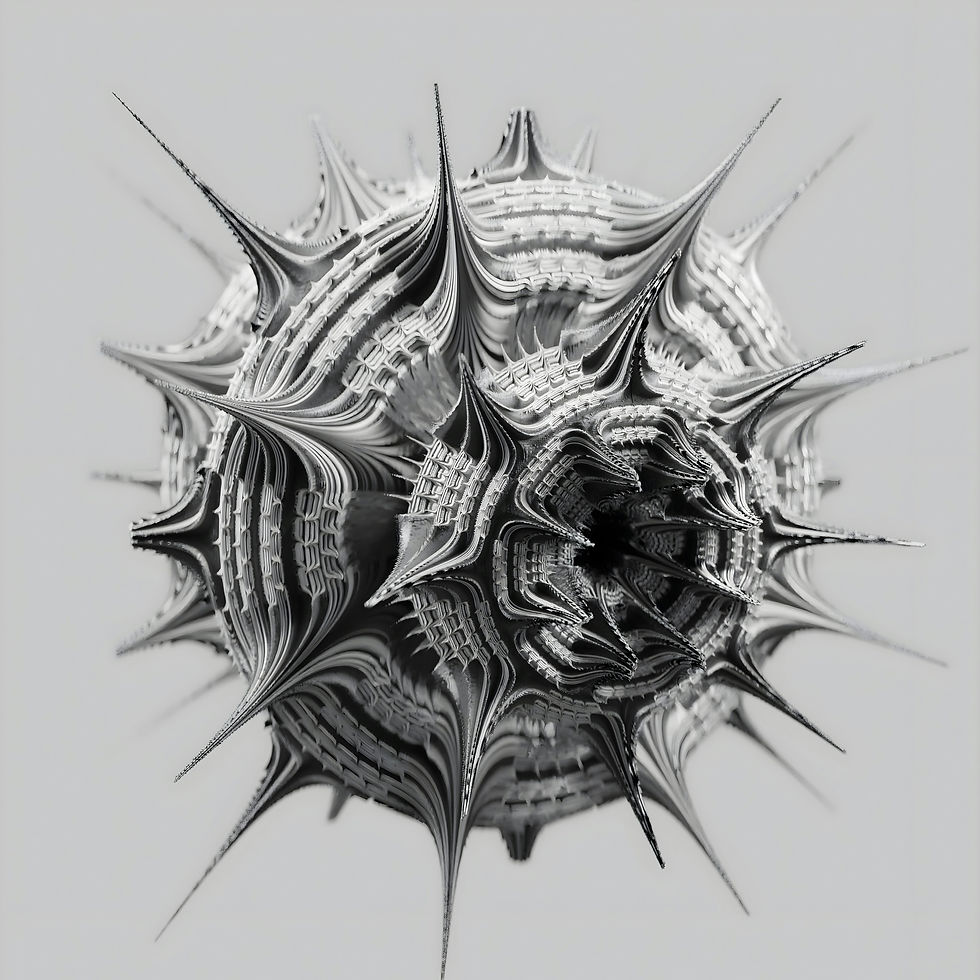Exploring the Fractals of Ergodic Theory
- ss5071
- Nov 25, 2023
- 3 min read
Exploring the Fractals of Ergodic Theory Have you ever wondered about the hidden patterns and structures that exist within the realm of mathematics? If so, then prepare to be amazed as we delve into the captivating world of Ergodic Theory and Dynamical Systems. In this blog post, we will be joined by Saeed Shaabanian, a PhD student at the University of St. Andrews, as he takes us on a journey through the mesmerizing fractals that emerge from this field of study. Ergodic Theory is a branch of mathematics that deals with the statistical properties of dynamical systems. These systems can be as simple as a pendulum swinging back and forth or as complex as the weather patterns on Earth. By studying the long-term behavior of these systems, mathematicians can uncover hidden patterns and structures that are not immediately apparent. One of the most fascinating aspects of Ergodic Theory is the emergence of fractals. Fractals are complex geometric shapes that exhibit self-similarity at different scales. They are characterized by intricate patterns that repeat themselves infinitely, creating a mesmerizing visual experience. Fractals can be found in nature, art, and now, thanks to Ergodic Theory, in the realm of mathematics. Saeed Shaabanian has dedicated his research to exploring the fractals that arise from Ergodic Theory. By studying the behavior of dynamical systems, he has been able to uncover stunning fractal patterns that were previously unknown. These fractals not only provide a visual feast for the eyes but also offer valuable insights into the underlying dynamics of the systems being studied. One example of a fractal that emerges from Ergodic Theory is the famous Mandelbrot set. This fractal is created by iteratively applying a simple mathematical formula to a complex number. The result is a stunning image that showcases intricate patterns and structures. The Mandelbrot set has captivated mathematicians and artists alike, inspiring countless works of art and furthering our understanding of complex systems. So, how can you explore the world of fractals and Ergodic Theory? Here are a few tips to get you started: 1. Dive into the literature: There are numerous books and research papers available that delve into the intricacies of Ergodic Theory and fractals. Start by reading introductory texts and gradually work your way up to more advanced material. 2. Experiment with software: There are several software programs available that allow you to explore and generate fractals. Programs like Fractint and Apophysis offer a user-friendly interface for creating your own fractal masterpieces. 3. Attend conferences and workshops: Keep an eye out for conferences and workshops dedicated to Ergodic Theory and fractals. These events provide a great opportunity to learn from experts in the field and connect with fellow enthusiasts. 4. Join online communities: There are several online communities and forums where mathematicians and fractal enthusiasts gather to discuss and share their work. Joining these communities can provide valuable insights and feedback on your own explorations. In conclusion, Ergodic Theory and Dynamical Systems offer a fascinating glimpse into the hidden patterns and structures that exist within complex systems. Through the study of fractals, mathematicians like Saeed Shaabanian are able to unravel the intricate beauty of these systems and provide valuable insights into their behavior. So, why not embark on your own journey into the world of fractals and Ergodic Theory? Who knows what mesmerizing patterns and structures you may uncover along the way.




Comments